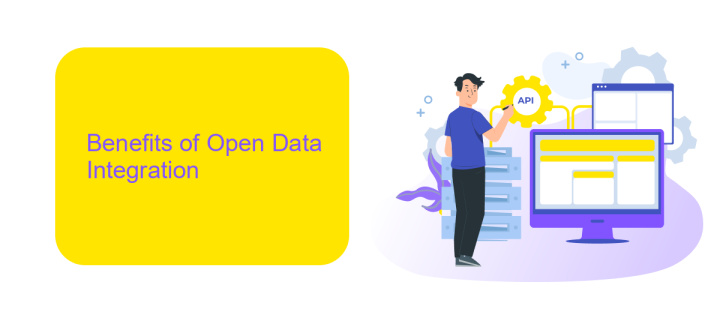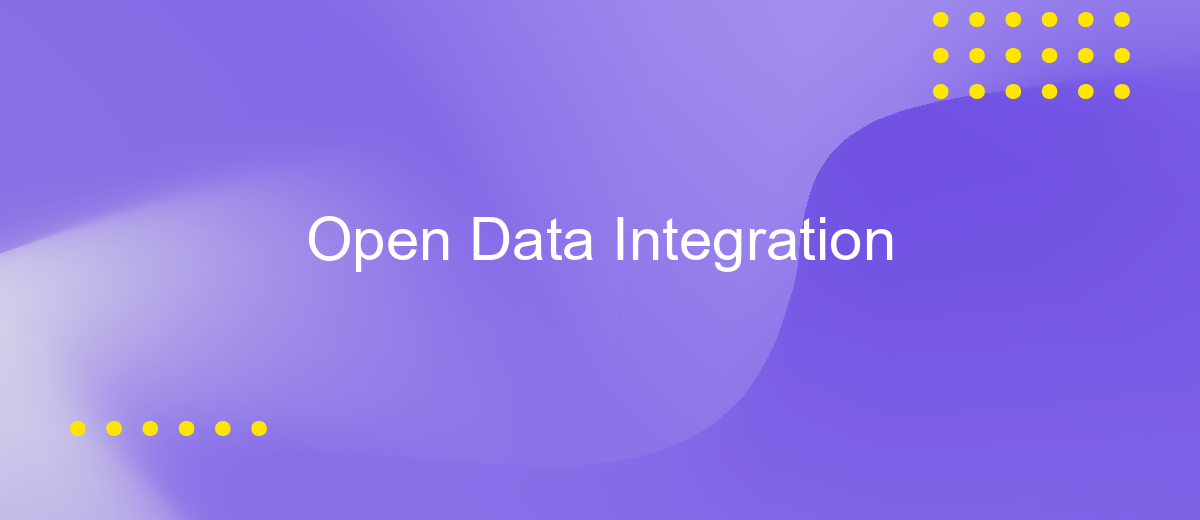Open Data Integration
Open Data Integration is a transformative approach that enables the seamless combination of data from diverse sources, fostering innovation and informed decision-making. By breaking down data silos and promoting transparency, it empowers organizations to harness the full potential of their data assets, driving efficiency and creating new opportunities across various sectors. This article explores the key principles, benefits, and challenges of Open Data Integration.
Introduction
Open Data Integration is an essential process in today's data-driven world, enabling organizations to combine data from multiple sources for comprehensive analysis and decision-making. With the increasing volume of data generated daily, integrating open data has become a critical task for businesses, governments, and researchers. This integration not only enhances the value of data but also promotes transparency, innovation, and collaboration across various sectors.
- Improved data quality and accuracy
- Enhanced decision-making capabilities
- Increased transparency and accountability
- Facilitation of innovation and research
- Cost savings through efficient data use
Despite its numerous benefits, open data integration presents challenges such as data heterogeneity, privacy concerns, and technical complexities. Addressing these challenges requires robust strategies, advanced technologies, and collaborative efforts. By overcoming these obstacles, organizations can unlock the full potential of open data, driving progress and fostering a data-centric culture.
Benefits of Open Data Integration

Open Data Integration offers numerous benefits, transforming how organizations manage and utilize data. One of the primary advantages is the enhanced decision-making process. By integrating diverse data sources, organizations can gain comprehensive insights, leading to more informed and strategic decisions. This holistic view allows for better trend analysis, risk management, and identification of new opportunities, ultimately driving business growth and innovation.
Another significant benefit is the improvement in operational efficiency. Open Data Integration reduces data silos, ensuring seamless data flow across various systems and departments. This efficiency is further amplified by using integration services like ApiX-Drive, which automates data synchronization between multiple platforms, saving time and reducing errors. By streamlining data processes, organizations can focus on core activities, improve productivity, and achieve better outcomes with fewer resources.
Challenges of Open Data Integration

Open Data Integration presents a unique set of challenges that organizations must navigate to effectively utilize diverse data sources. The integration process often involves dealing with heterogeneous data formats, varying data quality, and differing data standards, which can complicate the harmonization of information from multiple origins.
- Data Quality and Consistency: Ensuring the accuracy and reliability of data from various sources is a significant hurdle.
- Data Privacy and Security: Protecting sensitive information while integrating open data can be complex and requires robust security measures.
- Interoperability: Achieving seamless interaction between different data systems and formats is essential but challenging.
- Scalability: Handling the increasing volume and variety of data efficiently is crucial for long-term success.
- Legal and Ethical Issues: Navigating the legal frameworks and ethical considerations surrounding data use is critical.
Addressing these challenges requires a strategic approach, including the implementation of standardized protocols, the adoption of advanced data management technologies, and continuous collaboration among stakeholders. By overcoming these obstacles, organizations can unlock the full potential of open data integration and drive innovation.
Best Practices for Open Data Integration

Effective open data integration is essential for leveraging the full potential of diverse data sources. To achieve this, it is crucial to adopt best practices that ensure data quality, interoperability, and security. By following these guidelines, organizations can streamline their data integration processes and maximize the value derived from open data.
First, ensure that data is well-documented and standardized. Consistent metadata and standardized formats facilitate easier data merging and comparison. Additionally, adopting widely accepted data schemas can enhance compatibility between different data sets.
- Utilize APIs for seamless data access and integration.
- Implement robust data validation and cleaning procedures.
- Ensure data security and privacy through encryption and access controls.
- Foster collaboration by sharing best practices and tools within the community.
Finally, continuously monitor and update data integration processes to adapt to evolving standards and technologies. Regularly reviewing and refining these practices will help maintain data integrity and relevance, ultimately leading to more informed decision-making and innovative solutions.


Future of Open Data Integration
The future of Open Data Integration is poised for significant advancements, driven by the increasing demand for real-time data sharing and the proliferation of IoT devices. As organizations continue to recognize the value of interconnected data systems, the emphasis will shift towards more seamless and automated integration solutions. Machine learning and artificial intelligence will play a crucial role in enhancing data compatibility and reducing the manual effort required for data mapping and transformation. Additionally, the adoption of standardized protocols and open APIs will foster greater interoperability between diverse data sources and platforms.
Moreover, services like ApiX-Drive are set to revolutionize the way businesses handle data integration. By providing user-friendly tools that simplify the setup and management of integrations, ApiX-Drive enables organizations to connect various applications and automate data workflows without extensive technical expertise. This democratization of data integration will empower smaller enterprises to leverage the benefits of open data, driving innovation and efficiency across industries. As these technologies evolve, we can expect a more connected and data-driven world, where information flows effortlessly across systems, enhancing decision-making and operational agility.
FAQ
What is Open Data Integration?
Why is Open Data Integration important?
What are the challenges associated with Open Data Integration?
How can automation tools assist in Open Data Integration?
What best practices should be followed for effective Open Data Integration?
Time is the most valuable resource for business today. Almost half of it is wasted on routine tasks. Your employees are constantly forced to perform monotonous tasks that are difficult to classify as important and specialized. You can leave everything as it is by hiring additional employees, or you can automate most of the business processes using the ApiX-Drive online connector to get rid of unnecessary time and money expenses once and for all. The choice is yours!

